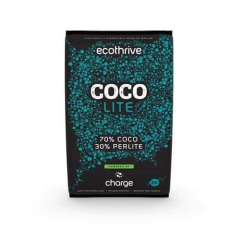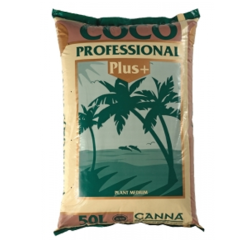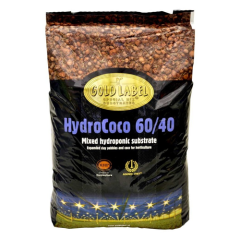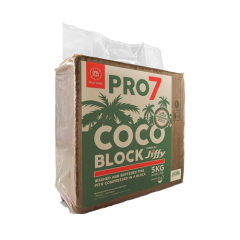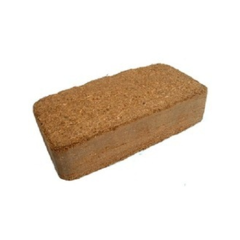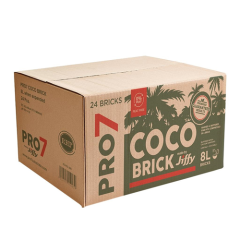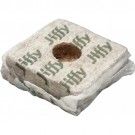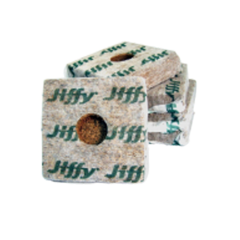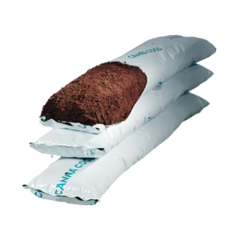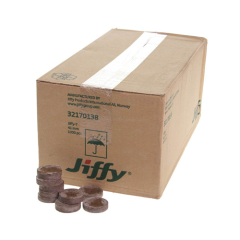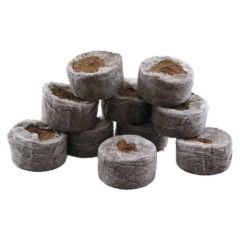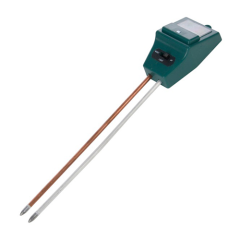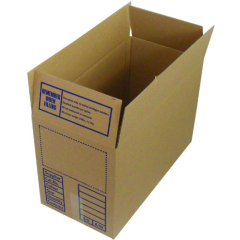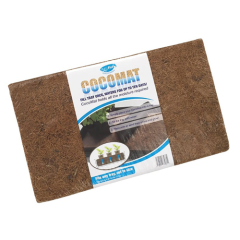- Call an expert today! 0208 808 4321
 Store Locator
Store Locator
Coco
Why Choose Coco Coir?
Coco coir has gained immense popularity among gardeners and hydroponic enthusiasts due to its eco-friendliness, sustainability, and superior growing capabilities. Derived from coconut husks, coco coir offers excellent water retention, aeration, and a neutral pH, making it ideal for various plants.
Coco coir is reusable, lightweight, and easy to handle, making it a favourite choice for both beginners and experienced growers. Whether you are growing vegetables, herbs, or flowers, coco coir provides a stable and efficient medium that promotes consistent results.
How to Buffer Coco Coir
Unbuffered coco coir may contain salts that can hinder plant growth. Buffering coco coir ensures these salts are removed, creating a plant-friendly environment. Here’s how to buffer coco coir effectively:
Rinse Thoroughly: Use clean, pH-neutral water to rinse your coco coir. Products like Jiffy Coco Block simplify this process, as they expand when soaked, allowing thorough rinsing.
Soak in a Cal-Mag Solution: Prepare a solution with calcium and magnesium supplements to displace sodium and potassium salts. Let the coco coir soak for at least 24 hours.
Drain and Rinse Again: After soaking, drain the solution and rinse the coco coir with clean water to remove any remaining salts.
Buffered coco coir, such as Canna Coco Coir Professional Plus, comes pre-treated, saving you time and ensuring high-quality results.
How to Add Nutrients to Coco Coir
Coco coir is an inert medium, meaning it doesn’t provide nutrients to plants. Here are steps to add nutrients effectively:
Choose the Right Nutrients: Use coco-specific nutrients like those offered by Biobizz Coco Mix. These are tailored to the unique properties of coco coir.
Start with a Base Fertilizer: Incorporate a balanced NPK fertilizer to promote overall growth.
Supplement with Additives: Include calcium, magnesium, and iron to address common deficiencies in coco coir systems.
Maintain Proper pH Levels: Keep the nutrient solution’s pH between 5.8 and 6.2 for optimal nutrient uptake.
How to Mix Coco Coir with Soil
Mixing coco coir with soil can enhance water retention, aeration, and nutrient distribution. Follow these steps for the best results:
Prepare the Coco Coir: Expand and rinse coco coir blocks or Coco Bricks to ensure they are free of impurities.
Create the Mix: Combine coco coir and soil in a 50:50 ratio for general gardening purposes. For moisture-loving plants, increase the coco coir percentage.
Add Amendments: Incorporate compost, perlite, or fertilizers to enrich the mix.
Monitor Watering: The mix will retain water longer, so adjust your watering schedule to prevent overwatering.
This blend is particularly beneficial for potted plants, ensuring they stay hydrated and well-aerated.
How to Use Coco Coir in Hydroponics
Coco coir is a versatile medium for hydroponic systems, offering excellent water retention and aeration. Here’s how to use it effectively:
Prepare the Coco Coir: Expand products like Gold Label Coco Coir with clean, pH-neutral water. Buffer if necessary.
Set Up the System: Place the coco coir in net pots or grow bags within your hydroponic setup.
Apply Nutrients: Use a coco-specific nutrient solution and maintain the pH between 5.8 and 6.2.
Monitor EC Levels: Regularly check the electrical conductivity (EC) of your nutrient solution to prevent salt buildup.
Flush Periodically: Rinse the coco coir every few weeks to prevent nutrient lockout and maintain a healthy root zone.
Copyright © 2024 Hyjo Store. All Rights Reserved.









